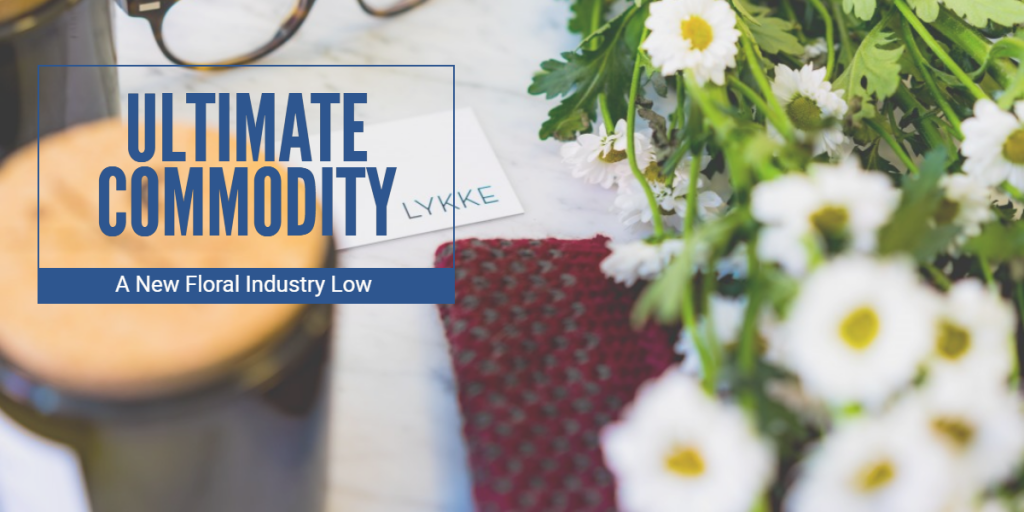Earlier this week, our friends at Bloomerang outlined the devastating effects of FTD Inc.’s Valentine’s 2018 market campaigns. According to the article:
FTD launched an aggressive marketing campaign for Valentine’s Day by combining brand marketing for two of its flagship labels – ProFlowers and Shari’s Berries – urging consumers to “think inside the box” by eschewing traditional florists and instead purchasing a box containing pre-packaged flowers and chocolate covered strawberries direct-shipped from the a[sic] warehouse to the customer.
This approach lead to a Valentine’s holiday that underperformed their expectations by as much as $20 million. The company is considering $50 million in credit support from their largest shareholder, Liberty Interactive Corp.
But this article isn’t about FTD. At least, not directly.
You see, this latest incident with FTD is not a new problem, but is actually symptomatic of a much larger problem in our industry. It’s a problem that is perpetuated much more frequently by retail florists than the various conglomerations of online and order gathering outfits.
Ultimate Commodity

For years now, anyone who has attended one of my sessions at a floral conference has heard me talk about the commodification of flowers (this is both one of my Red Flag signs of impending doom, and a component of my Essential Marketing Recipe session). The concept is simple: That flowers have increasingly become a product to by searched by SKU and compared by price, rather than a service that conveys an emotional component.
When a consumer sees the same designs and SKU numbers on 10s of thousands of florist websites that look the same, they are being told that the florist is simply a distributor. The customer now shops for flowers the same as they would… Share on XHow do we all shop for mass-produced products? We research to find the right product, then we seek out the cheapest source available to us. If we pay any premium it’s for some measure of convenience that overcomes a problem (ex: rush shipping, better shopping experience). When most florists sell the same products from the same
FTD’s emphasis on selling flowers in a box this Valentine’s Day is simply the natural progression of this way of thinking. And the consumers responded with an unmistakable response.
Consumers are clearly telling us they don't want commodity floral items. And competing at that level is a losing battle for florists. It's time for florists to emphasize their uniqueness and build 10,000 awesome local brands. Share on XToys “R” Us gives serves as a tragic example of what happens when you are forced to rely on the brands that you sell, instead of creating and evolving a compelling identity of your own. Blaming Amazon for the demise of this American icon is a lazy narrative at best … in reality, the equity group controlling Toys “R” Us left them with too much debt to invest in staff training, store experience, and brand building. The result was nearly 900 warehouse stores with bored, under-trained staff and shelves piled with over-priced commodity items (that may or may not be in stock).
Whose Brand Are You Building?


When a customer is interacting with your business, whose brand are they experiencing? When they look at your website, are they seeing a national brand presented as much or more often than your own?


If you are tired of representing someone else’s brand with your time, sweat, money, stress, and work, then it’s time for a brand overhaul. But take caution: The solution to decades of floral branding fail is not to abandon wire services for independent providers that take the same templated approach! There’s a real danger in thinking we’re taking a big step forward when that leap is actually taking us from the frying pan to the fire.
The solution happens at a higher level. When you decide to embrace your identity as a strong, unique, local, independent business then the ramifications flow throughout your company. The real fix is not a new website, it’s a new way of thinking about your company.
Then, whether you decide to stay with a wire service solution, or opt for a custom-built florist ecommerce website, you will be able to build your brand through the floral designs you offer, the content and expertise you share, and the way that you thoughtfully approach every element of customer interaction.

